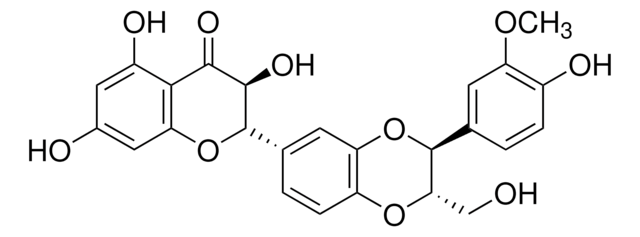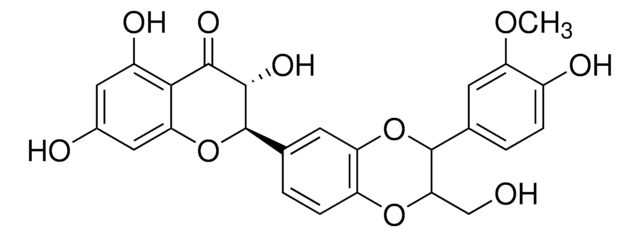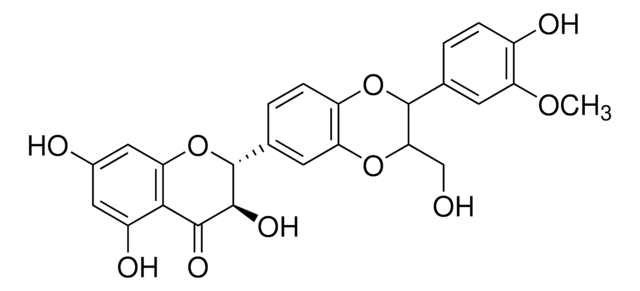S0292
Silymarin
flavonolignans
Sinónimos:
flavolignans
About This Item
Productos recomendados
biological source
plant (Silybum marianum)
Quality Level
form
powder
technique(s)
toxicology assay: suitable
application(s)
microbiology
storage temp.
−20°C
InChI
1S/C25H22O10/c1-32-17-6-11(2-4-14(17)28)24-20(10-26)33-16-5-3-12(7-18(16)34-24)25-23(31)22(30)21-15(29)8-13(27)9-19(21)35-25/h2-9,20,23-29,31H,10H2,1H3
InChI key
SEBFKMXJBCUCAI-UHFFFAOYSA-N
General description
Application
- its in vitro antiviral, antibacterial, antifungal activities and cytotoxicity
- its effect of silymarin on bladder contractions in cyclophosphamide (CYP)-induced cystitis rat model
- its effect on liver toxication induced by Fumonisin B1 in mice
Biochem/physiol Actions
Other Notes
Storage Class
11 - Combustible Solids
wgk_germany
WGK 3
flash_point_f
Not applicable
flash_point_c
Not applicable
ppe
Eyeshields, Gloves, type N95 (US)
Certificados de análisis (COA)
Busque Certificados de análisis (COA) introduciendo el número de lote del producto. Los números de lote se encuentran en la etiqueta del producto después de las palabras «Lot» o «Batch»
¿Ya tiene este producto?
Encuentre la documentación para los productos que ha comprado recientemente en la Biblioteca de documentos.
Los clientes también vieron
Artículos
Antioxidants protect biological systems from oxidative damage produced by oxygen-containing free radicals and from redoxactive transition metal ions such as iron, copper, and cadmium.
Nuestro equipo de científicos tiene experiencia en todas las áreas de investigación: Ciencias de la vida, Ciencia de los materiales, Síntesis química, Cromatografía, Analítica y muchas otras.
Póngase en contacto con el Servicio técnico





